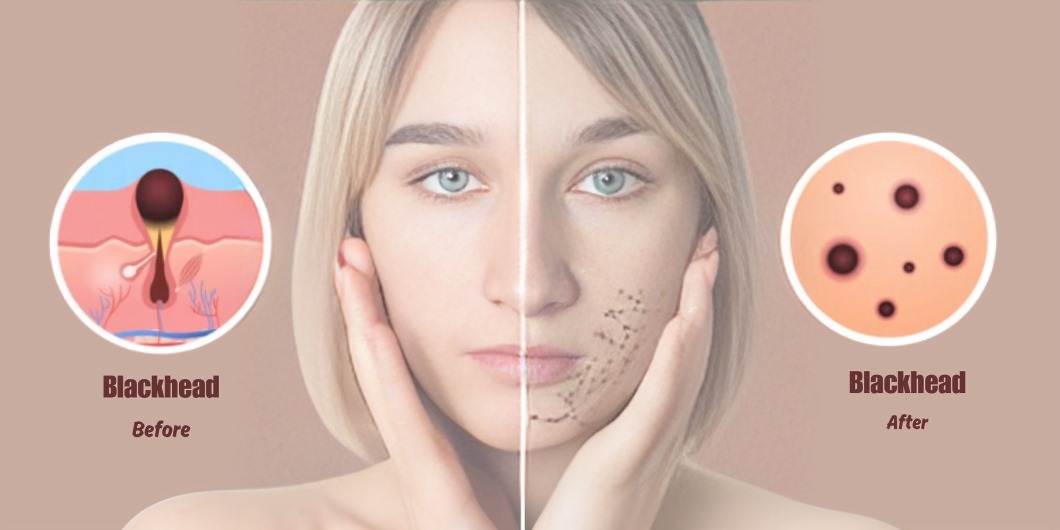HEALTH AND FITNESS
Blackhead removal: causes, symptoms and treatment

Blackheads – those pesky little dots that seem to have a knack for popping up at the most inconvenient times. Whether you’re getting ready for a special occasion or just trying to rock your everyday look, dealing with blackheads can be a frustrating experience. But fear not! In this blog post, we’ll dive into everything you need to know about blackhead removal, from causes and symptoms to treatment options and prevention techniques. Say goodbye to those stubborn spots and hello to clear, radiant skin! Let’s get started on banishing those blackheads for good.
Table of Contents
What are blackheads?
Blackheads are small protuberances on the skin. They are formed due to the blockage of the hair follicle and are also known as open comedones. They will usually present with the surface being of a dark or black color, most especially in the face T-zone area. This happens when the skin lubricant (sebum) secreted by the skin is too much and joins with dead skin cells, sticking in the pores. The dark color of blackheads is not caused by dirt but rather by oxidation when the clogged pore is exposed to air.
Whiteheads are closed comedones, and they have a thin layer of skin on top, while blackheads are open comedones to the surface. Thus, they can be exposed to oxygen and react with the trapped oils and debris to give their classic discoloration. While not as pernicious or painful as cystic acne, they can be pesky and cause an unsightly blemish to your aesthetic, maybe even making you self-conscious. Understanding the cause of these intractable spots is key to effectively dealing with them through proper treatments and preventive measures.
Causes of Blackheads
Blackheads are common dermatological problems resulting from a variety of reasons. Reasonably, the overproduction of oil by the sebaceous glands in the skin is one of the principal reasons that blackheads are developed. When excess oil combines with dead skin cells and bacteria, it can clog pores and lead to the formation of blackheads.
Another cause that makes the formation of these stubborn spots more susceptible is poor habits in the care of the skin, For example, irregular cleaning of the face or the use of harsh products that rob the skin of its natural oils. Other causes making one susceptible to the formation of these blackheads are hormonal changes in the body, such as when one is a teenager, during the menstrual cycle, or during pregnancy, which produce increased oil.

Other environmental factors, such as pollution and high humidity, may contribute to even worse conditions for blackhead development, as these will increase the occlusion rate of the pore. Besides, some people have a genetic predisposition because of the type of skin and the functioning of the pores.
Understanding all these different causes of this blackhead can drive individuals to take proper preventive and treatment measures for effectively dealing with these ugly things called blackheads.
Symptoms and Signs of Blackheads
On the skin, they may look like little dark spots, most likely on the face but also the neck, chest, and back. These little bumps, at times raised, have more surrounding open pores through which oil and skin cells can be trapped. The blackhead symptoms include dark or yellowish plugs in the pores that may have a little bit of elevation over the skin.
There is roughness or a bumpy texture felt on the skin in areas or parts of the skin where these comedones are, in patients who have blackheads. Unlike other forms of acne lesions, such as whiteheads or cysts, they do not usually cause any pain or inflammation, unless they have become infected.
In others, they may increase during hormonal changes, for example, puberty or menstruation. Other factors that include an oily skin type and some skincare products may aid in their formation.
A simple way to help the blackhead symptoms, which are extremely soothing and do not irritate the skin, would be following regular cleaning routines with soft exfoliants and non-comedogenic products.
The Difference Between Blackheads and Other Types of Acne
Many people believe that blackheads are another variety of acne. In reality, it has very different features from a whitehead or pimple. This is an open comedo that is developed when oil, dead skin cells, and bacteria become trapped in a pore. They oxidize and turn dark in color.
The main difference with the other types of acne is that they are open to the air, hence resulting in the debris turning black. Whiteheads, pustules, and the terms used to describe this kind of acne make sure to distinguish them from closed comedones lying under the skin but pussing due to inflammation.

Blackheads are, moreover, the kind of non-inflammatory lesions where redness and swelling do not generally occur. They could appear on any part of the face or the body but are considered most common when found on the nose, chin, and forehead. It’s very important that a person also be aware of such differences so that a person can treat and keep the reoccurrence of blackheads to a minimum on the skin.
Treatment Options for Blackheads
When it comes to blackhead treatment, it usually ranges from over-the-counter treatment to prescriptions by a dermatologist, depending on how serious it might be. They may typically be treated by the use of OTC drugs meant for the stated problem. Certain products bought over the counter contain salicylic acid or benzoyl peroxide, acting to unblock pores and reduce oil production.
The treatment for blackheads is mostly home remedied. The use of natural ingredients, like tea tree oil, honey, or even clay masks, often helps to eliminate them and break out in the future. Exfoliating from time to time helps get rid of dead skin cells; in this case, it does help ensure pores are unobstructed.
In tougher cases, dermatologists may recommend professional treatments that include a chemical peel or microdermabrasion, among others. They are treatments that are used to clean the skin deeply, helping it to improve the texture in general.
Remember to get the right treatment options that work best for your skin type and concerns. By now, you have to try out some of these treatments to see what would work best for you.
Prevention of Blackheads
To not allow blackheads to come up, a person should follow a constant and regular routine of skin care, facial cleaning with a mild cleanser to remove any dirt or oil, along with dead skin cells that might be responsible for blocking pores at least twice a day. One should use products that do not clog the pores.
Regular exfoliation works in keeping off by removing dead skin cells and keeping them from clogging in open pores. However, great care is supposed to be taken not to over-exfoliate the skin and make it worse.
Products with applied salicylic acid or benzoyl peroxide to the skin can help control the production of oil and clear the pores, respectively. Further, once or twice per week, an application of the use of a clay mask can help absorb excess oils and impurities from the skin.
A diet that is low in sugar and fats from processed foods but abundant in fruits, vegetables, whole grains, and lean proteins could make your skin look better. Hydration by drinking the right amount of water every day is a kind of betterment for your skin from inside your body.
Common Myths about Blackhead Removal
One common myth about blackhead removal is that squeezing them with dirty fingers is an effective method. In reality, this can lead to further irritation and even infection. It’s important to cleanse the skin properly before attempting any removal.
Another misconception is that using harsh scrubbing tools will eliminate blackheads for good. While exfoliation is necessary, being too aggressive can damage the skin barrier and worsen the condition. Gentle exfoliation is key.
Many people believe that toothpaste or baking soda can magically make them disappear overnight. However, these products are not designed for skincare and can cause more harm than good. Stick to proven skincare ingredients like salicylic acid or benzoyl peroxide.
There’s a belief that blackheads only affect those with poor hygiene habits. In truth, factors like genetics, hormones, and skincare routines play a significant role in their development. Regular cleansing alone may not prevent them completely.
Conclusion
Blackheads are very common in connection with the skin, and they can be well kept under control with proper treatment and measures of prevention. Now, one can easily take precautions in this regard for clear and healthy skin through causative, symptomatic, and available treatments for blackheads.
Whether it is product treatments over the counter or any professional treatment, the key is consistency. A balanced diet and avoidance of comedogenic products can keep them at bay. Look for always evidence-based information and get personalized advice from dermatologists. With patience and dedication, you can manage blackheads and achieve clear skin with the right knowledge and commitment.
-

 GENERAL2 months ago
GENERAL2 months agoUncovering the World of кинокрадко: The Dark Side of Film Piracy
-

 GENERAL1 month ago
GENERAL1 month agoUnveiling the Art of преводсч: How Translators Bridge Language Barriers
-

 YOGA1 year ago
YOGA1 year ago4 Person Yoga Poses for Beginners
-

 GENERAL2 months ago
GENERAL2 months agoThe Journey of iamnobody89757: From Anonymous User to Internet Sensation





























